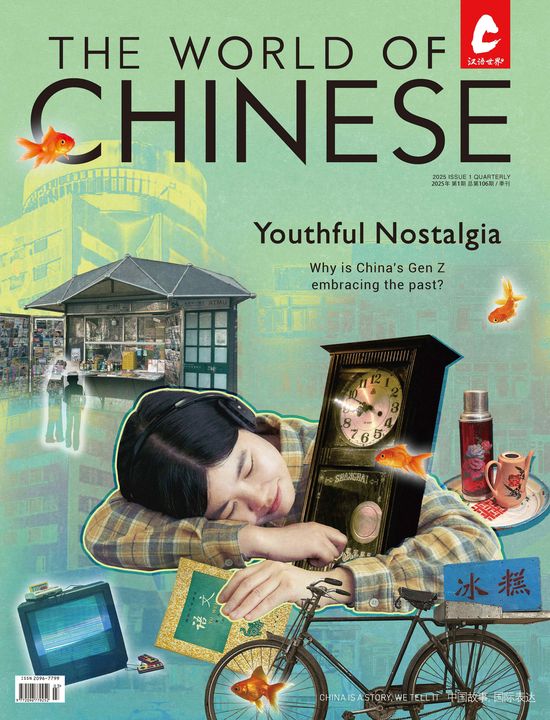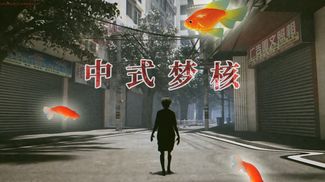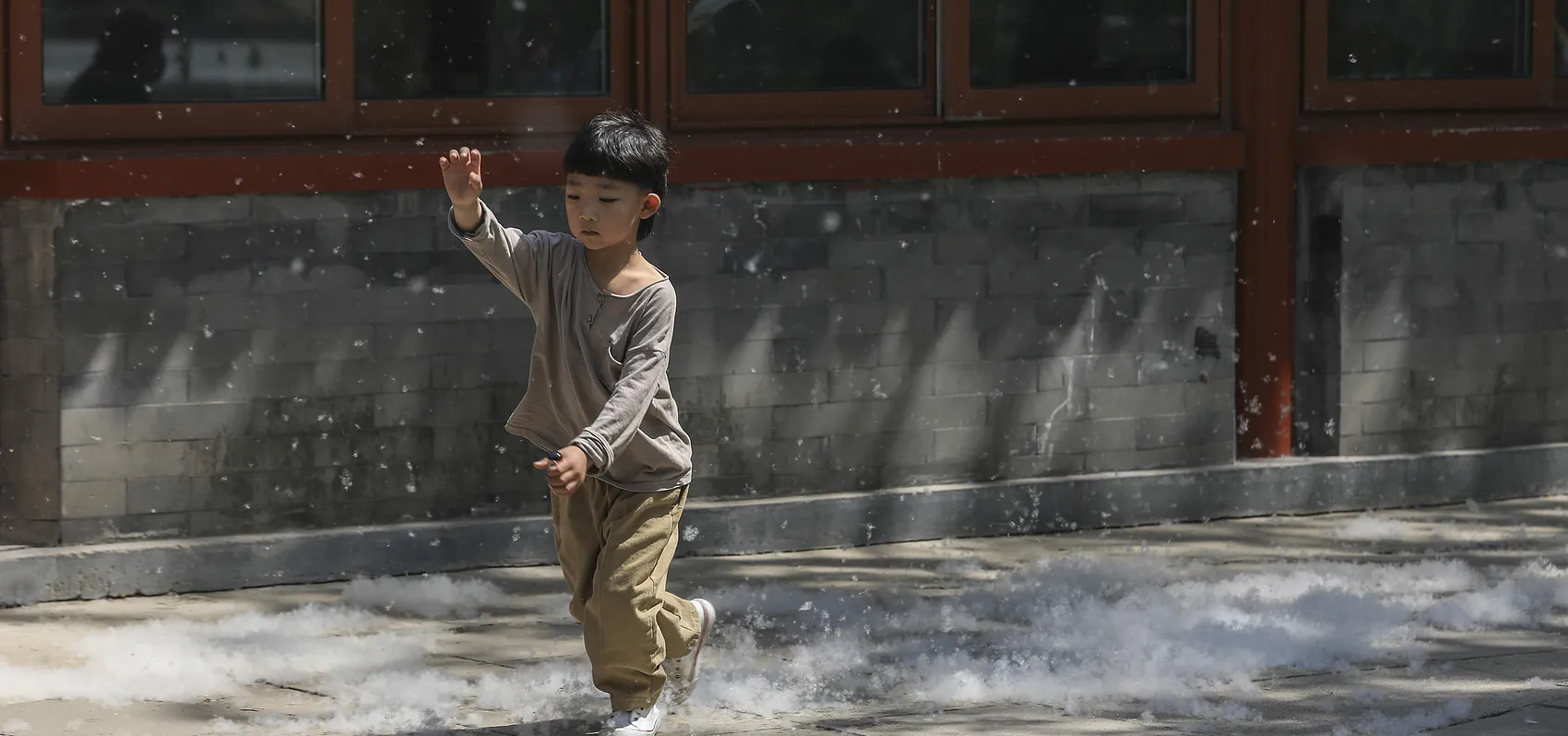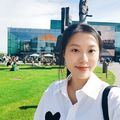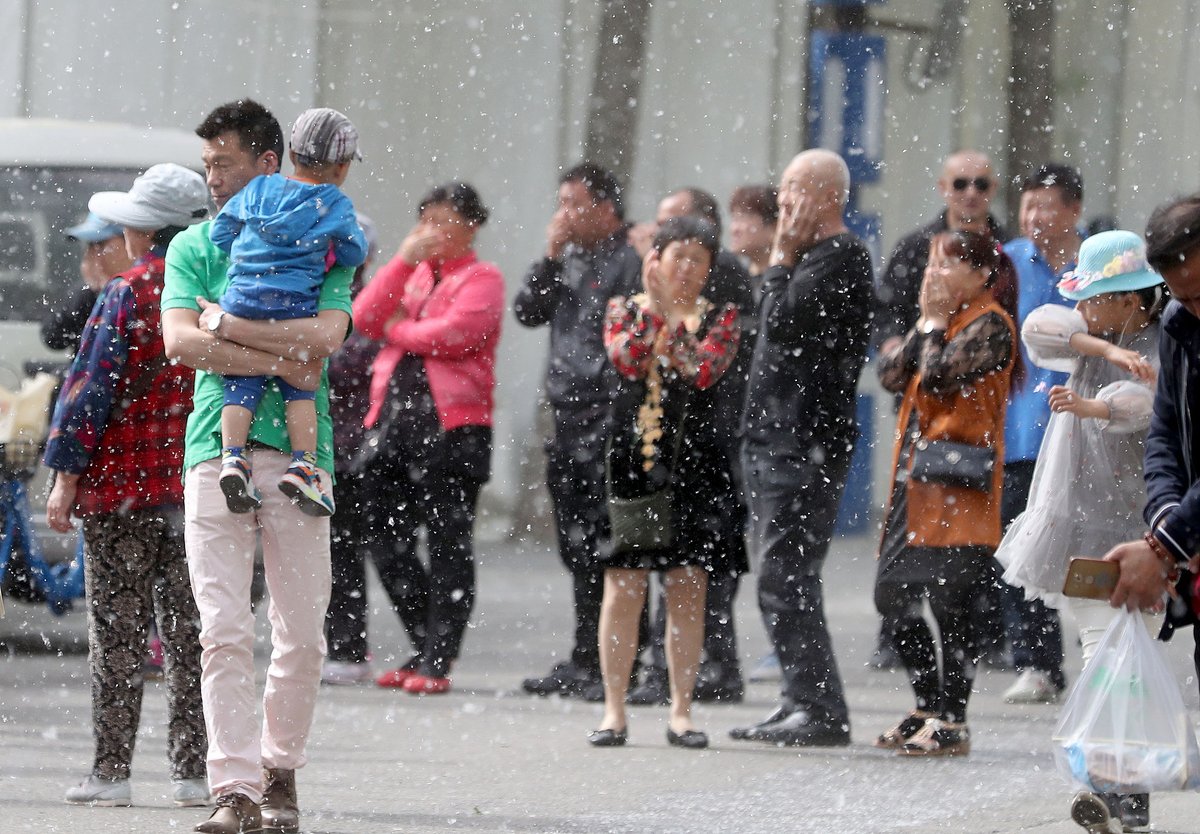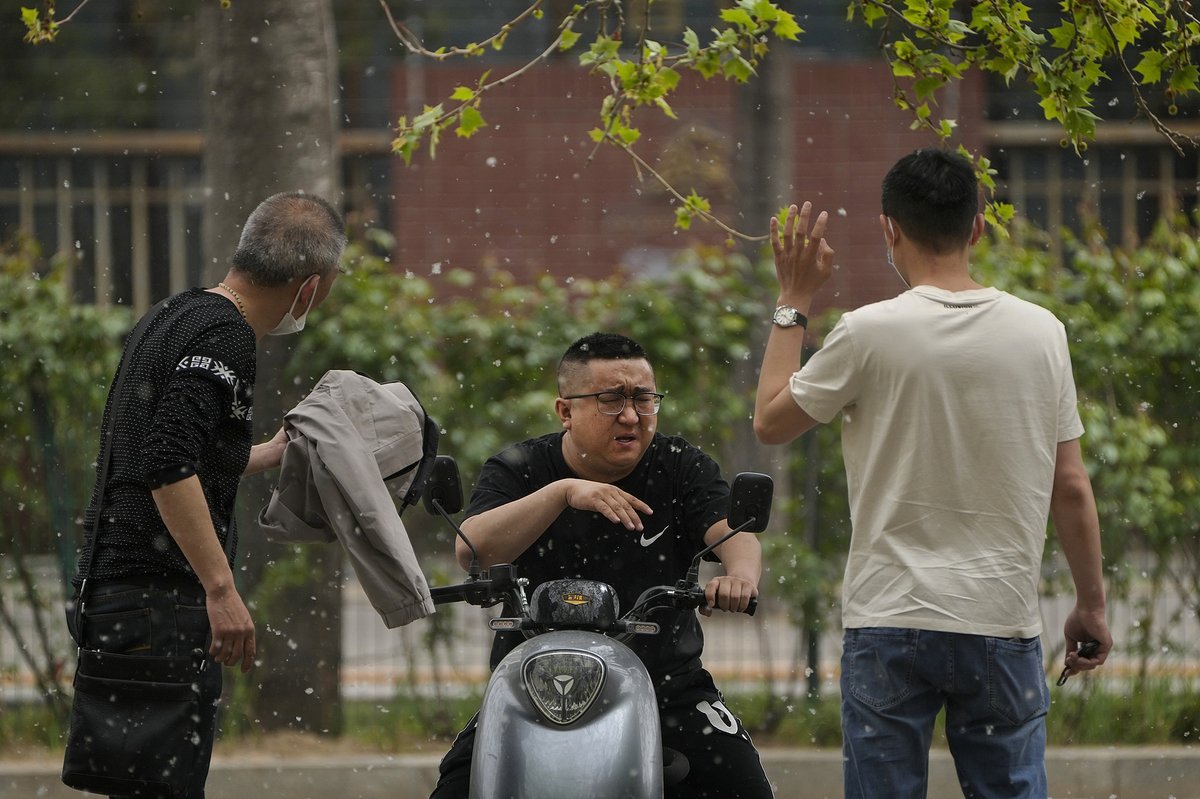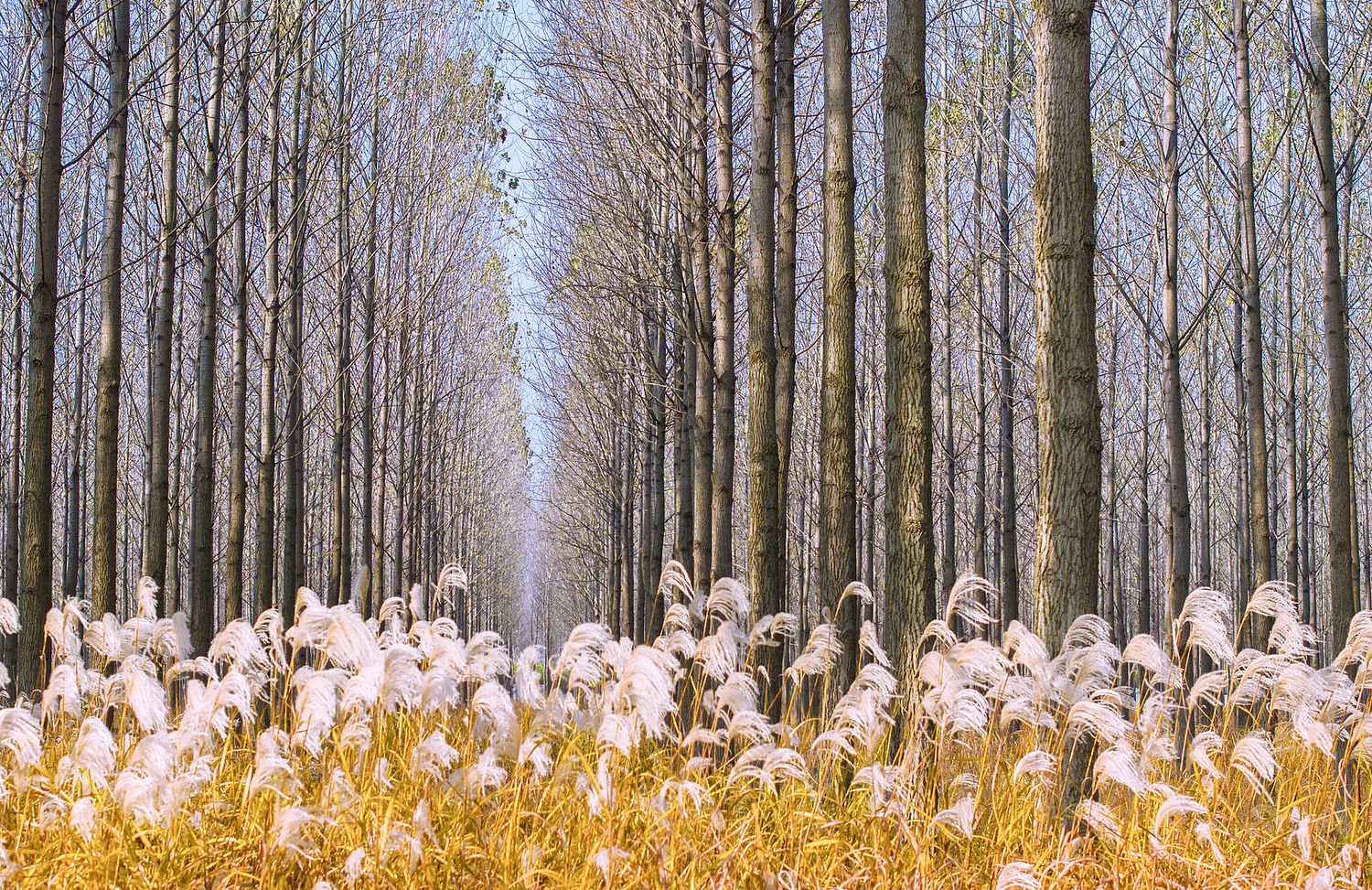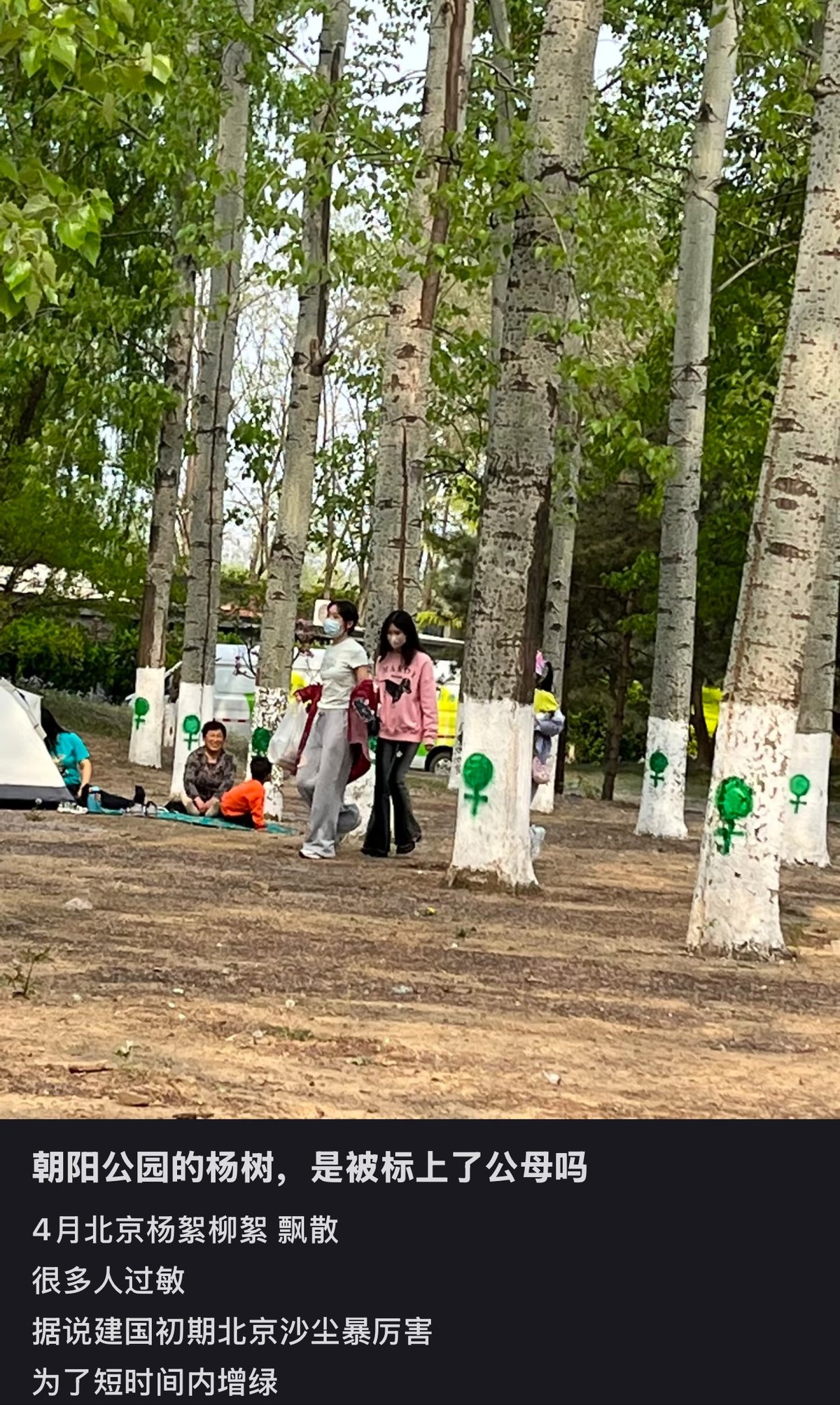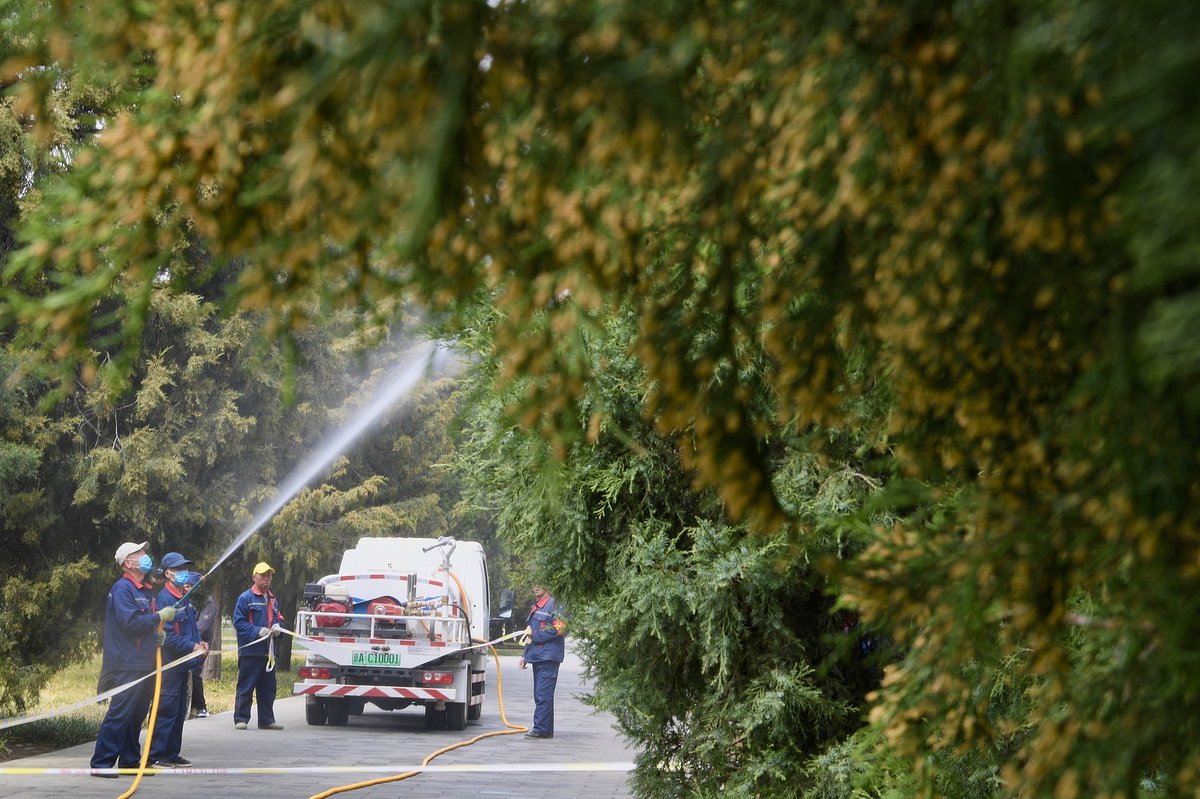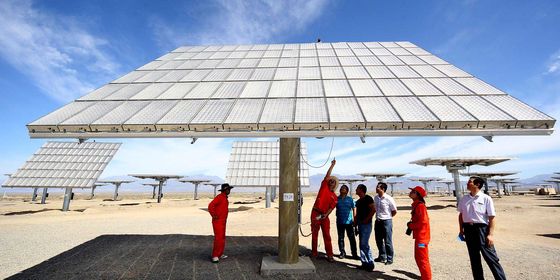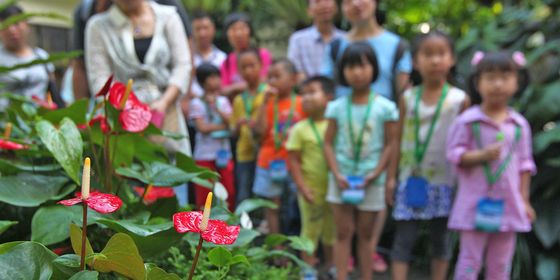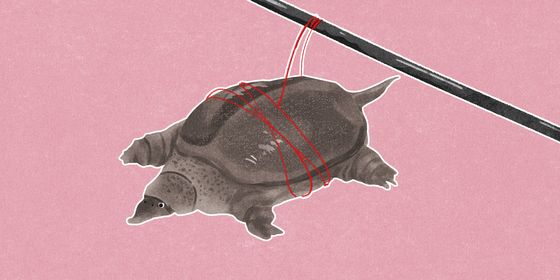Beijing has an allergy crisis, and it hits every spring with the shedding of poplar and juniper trees. While complaints make headlines every year, solutions remain elusive.
Every March, Beijing undergoes a dramatic transformation. The monochrome silhouettes of winter branches transform into lush, full-bodied trees with dense green leaves almost overnight, heralding the arrival of spring. But for residents like Zhang Futian, this renewal brings only dread. “It’s brutal,” says the 32-year-old office worker. “I used to jog near the Temple of Heaven every morning. But since 2021, I’ve had to wear an N95 mask just to walk outside. The fluff (from poplars and willows) is unbearable—it’s like snow in April.”
Zhang spends more than 500 yuan each spring month to manage his allergies—but his wife, a tour guide at the Summer Palace and the Temple of Heaven, has had it even worse. “She spent 1,600 yuan just to get her allergens identified at the hospital and another 1,400 yuan on nasal injections,” he tells TWOC. Wearing a mask on the job isn’t an option, which only makes things more challenging.
Videos capturing golden clouds of juniper pollen swirling dramatically around the Temple of Heaven—the place where she gives tours—have flooded social media. While there is no escape for Zhang’s wife, many fellow allergy sufferers have taken it upon themselves to share “pollen escape routes” and “survival schedules” on social media like tactical maps. Some netizens also joke that if Shi Tiesheng—the late author of the acclaimed memoir The Temple of Earth and I—were to visit the site today, his wheelchair would need to come with a built-in tissue rack. But the struggle doesn’t end with the peak of the pollen release. Soon after, the city will be blanketed in drifting poplar and willow fluff—white, cottony tufts from catkins that carry tree seeds, along with dust and lingering allergens.
Read more about urban planning in China
- 15-Minute City: Can It Solve Chinese Urban Sprawl?
- Parks, No Recreation: The Battle to Access China’s Public Spaces
- In Southern China’s Once-Thriving “Garment Kingdom,” Business Fades Amid Urban Renewal
These wind-pollinated trees—mainly poplars, junipers, and cypresses—planted in large numbers decades ago around Beijing’s tourist sites and public parks, have become a major source of public frustration. Once favored for their fast growth and hardiness during Beijing’s greening campaigns in the 1980s, these trees now cast an unintended shadow over spring, turning the city’s seasonal bloom into an annual public health battle.
Though the greening campaigns seem to have unexpectedly backfired on the city’s residents, Beijing’s embrace of urban forestry was born out of necessity. Before the more recent pollen crisis, Beijing’s greatest springtime challenge was the sandstorms brought on by severe deforestation.
In 1949, after centuries of resource depletion, Beijing’s forest coverage had dropped to just 1.3 percent, with only five square meters of green space available per person in urban areas, according to data from the Beijing Municipal Forestry and Parks Bureau. Over the following two decades, the city was plagued by frequent sandstorms and high winds, leading the United Nations Conference on Desertification in 1977 to declare Beijing on the verge of desertification.
To reverse this trend, late-20th-century greening campaigns prioritized tree species that were resilient, fast-growing, and inexpensive—like poplars, junipers, and cypresses. Poplars, for instance, reach maturity in just three to five years, compared to the 20 to 30 years required for slower-growing species like ginkgo trees. In northern China, the market price of poplar and cypress seedlings aged one to three years is typically only 1 to 5 yuan, while elm seedlings of the same age could range from 15 to over 100 yuan.
These choices of species also hold cultural significance. According to records by the Beijing Ancient Tree Culture Network Platform, Ming emperor Zhu Di (朱棣) planted the very first two ceremonial cypresses at the Imperial Ancestral Temple, leaving an order of careful maintenance to benefit the later generations. Now, the two 400-year-old trees, along with more than 9 million other willow, poplar, juniper, and cypress trees planted across Beijing’s imperial parks and steel forests, have shaded and sheltered generations of life.
According to the Beijing government, 400,000 acres of new green space have been added since 2012, raising the forest coverage in the plains areas of Beijing to around 45 percent by the end of 2023, matching most international metropolises. The average number of dust storm days in Beijing has seen a significant decline over the years: from 26 days in the 1950s, fluctuating between 10 and 20 days in the 1960s to 1980s, to less than five days in the 1990s, and further decreasing to around three days after 2010, according to statistics from the Beijing Meteorological Service.
“These trees were ecological heroes at the time,” explains Niu Shihui, professor of conifer breeding and genetic resources with the School of Biological Sciences and Technology at Beijing Forestry University. “But their wind-dispersed pollen has become an unintended consequence.”
Li Jia, a 28-year-old illustrator from Guangdong, developed allergies within two years of moving to Beijing in 2018. “The doctor said my immune system was ‘learning the hard way,’” she laughs wryly, recalling the swollen eyes and constant tears. “It’s clearly a city-wide, if not city-specific, issue.”
It’s not quite city-specific. Niu tells TWOC that many cities in China, including Tianjin and Taiyuan, which are struggling with soil degradation and desertification, have also planted large numbers of poplar trees. In Suqian, Jiangsu province, over 440,000 acres of poplar were planted between 2001 and 2010 as part of a rapid greening effort. However, an investigation by The Paper revealed that Qiu He, a government official now serving a 16-year sentence for corruption, exploited the national policy by purchasing overpriced poplar trees from his mother-in-law. Qiu, a graduate of plant protection from Nanjing Agricultural University, strongly promoted the benefits of poplar trees during his time working in Suqian in the 90s.
The rapid growth of trees like poplar has also made them a convenient choice for local officials like Qiu, who are eager to demonstrate results within a short timeframe. Sheng Weitong, chief scientist at the Chinese Academy of Forestry, told Southern Weekly in 2012 that the performance evaluation system then incentivized short-term results, pushing officials to favor fast-growing trees such as poplar. Native species, while more valuable and of higher wood quality, take much longer to mature. “Leaders don’t see any hope [in planting slow-growing species] within their tenure,” Sheng remarked.
Many of these poplars planted, especially in Beijing, are mainly the female variety, as they grow faster in the early stages, offering higher economic returns. But once they reach maturity in three to five years and enter their peak reproductive phase, their excessive release of seeds and fluff from their catkins—amplified by the dense urban landscape—creates the annual crisis of airborne “fluff rain.” According to a 2017 government survey, there are over 2 million female poplar and willow trees (the varieties that produce the most fluff) in Beijing, accounting for over 5 percent of the urban green trees. Mostly planted in the 1960s and 70s, these female trees have now reached their prime, which is also the age when the fluff problem is most severe.
Beijing has long attempted to battle the pollen crisis. In the 1990s, when the first batches of female trees reached maturity, the ambitious “Million Male Poplar Trees into Beijing” project was proposed. Many male trees were quickly introduced in 1994. In 2013, Beijing strengthened relevant legal regulations and introduced the “Catalog of Main Conventional Afforestation Tree Species in Beijing,” which clearly stipulates the use of the male variety of poplars. The Beijing Municipal Forestry and Parks Bureau also prohibited the use of female poplar and willow trees in all landscaping projects as of 2015.
But there are still a far greater number of female poplar trees, as male trees lack hardiness and are slow to regenerate. Niu also adds that it’s difficult to distinguish between male and female during the initial growth stages of poplar and willow trees without professional DNA testing. “Unscrupulous vendors exploited this, passing off female seedlings as male to maximize profits,” she explains. In such cases, buyers often ended up discovering the deception only years later, when the trees began producing pollen and fluff.
“We must fundamentally rethink what quality green development means, creating urban spaces that truly balance ecological sustainability with healthy living. The goal isn’t more trees, but smarter greenery,” says Zhou Weiqi, a research fellow at the Research Center for Eco-Environmental Sciences at the Chinese Academy of Sciences.
His team’s 2024 research reveals that the rise of pollen allergy is, in fact, a global phenomenon. “Nearly all industrialized countries have seen a sharp rise in pollen allergy sufferers,” explains Zhou. In Tokyo, postwar Japanese cedar caused “kafunshō,” or hay fever, affecting millions. Zhou’s team has also found that pollen allergy prevalence has reached 40 percent in Europe and even higher in densely populated Japan (42.5 percent), compared to 5 to 15 percent in the United States. China currently reports a 5 to 10 percent prevalence, but urban areas face particular vulnerability. “Allergic reactions intensify in cities where pollen concentrates in confined spaces,” Zhou notes. “Paradoxically, as green spaces expand and plant diversity increases, too, so does the variety and quantity of allergenic pollen.”
The solutions have been straightforward. Japan has set a goal of around a 20 percent reduction in planted cedar tree areas by 2033. The government will accelerate the felling of cedar forests and replace them with low-pollen varieties. Regulators in Germany are also talking about diversifying urban forests. The 2021 revision of Beijing’s Major Tree Species Catalog signaled a shift toward greater species diversity, including the complete removal of Juniperus, including juniper and cypress trees. Although only the male trees release wind-borne pollen, residents can’t easily distinguish them—so the entire genus was excluded and replaced with alternatives like Exochorda, also known as pearlbush. Its sticky insect-transferred pollen poses negligible allergy risk. The catalog also stated that in the future, landscaping projects will strictly control the planting volume of relevant tree species and scientifically update and replace allergenic tree species in key areas.
While there are no immediate fixes other than spraying water to reduce pollen concentration in the air, science-informed technology and monitoring have been adopted to engage public attention and alleviate public health risks. The Beijing Municipal Forestry and Parks Bureau has collaborated with the Beijing Meteorological Service, Beijing Tongren Hospital, and other experts to carry out multiple research projects, including pollen allergy risk assessment, mechanisms, and rapid diagnosis. Beijing Meteorological Service also provides pollen monitoring forecasts, and there are real-time forecasts via websites like Beijing Air Quality and the WeChat mini-program Pollen Health Kit.
For now, allergy sufferers might still need their masks and timely medications, but in the long run, the future of urban forestry is looking clearer and less sneeze-inducing. As Zhou puts it: “We’ve planted trees to save the city’s lungs—now we’re learning to save its nose, too.”
